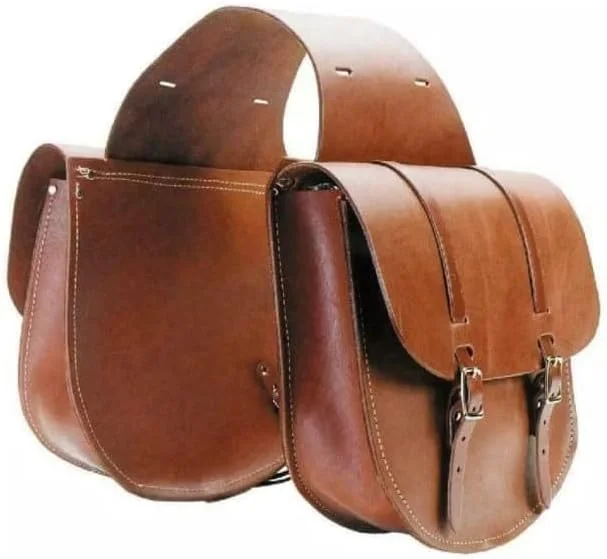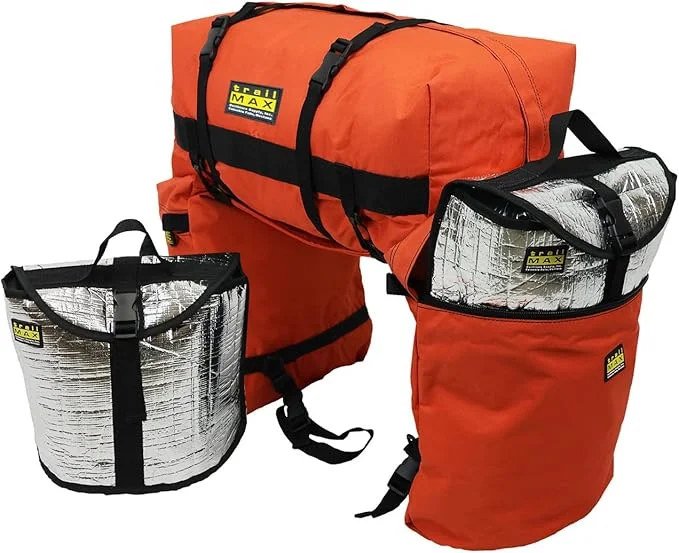When it comes to western saddle bags, riders often seek the perfect balance of functionality, style, and durability. These essential accessories can make a world of difference, whether you’re setting out on a short trail ride or an extended backcountry adventure. From understanding the best materials and sizes to choosing the right design for your needs, there’s a lot to consider. This guide is here to answer your most pressing questions and help you navigate the pros and cons, ensuring you select the ideal saddle bag for your equestrian lifestyle.

1. What materials are western saddle bags made of?
Western saddle bags are typically made from:
- Leather: Known for durability and classic aesthetic, though it requires regular maintenance.
- Canvas: Lightweight and breathable, suitable for moderate use.
- Nylon or Synthetic Materials: Affordable and often waterproof, making them ideal for all-weather riding.
- Insulated Materials: Some bags are lined for carrying perishable items or beverages.
2. How do I attach a saddle bag to my western saddle?
To attach a saddle bag:
- Locate the saddle’s “D-rings” or straps.
- Secure the bag using the provided clips, buckles, or ties.
- Ensure it is balanced on both sides to avoid discomfort for your horse.
3. What size saddle bag should I get?
The size depends on your needs:
- Small Bags: For essentials like keys, a phone, or a snack.
- Medium Bags: Suitable for day trips, holding water bottles, tools, or first-aid kits.
- Large Bags: Designed for extended trips, capable of carrying food, clothes, and camping gear.
4. Are western saddle bags waterproof?
Some saddle bags are waterproof, while others are only water-resistant. Look for:
- Bags with sealed zippers or flaps for added protection.
- Waterproof-treated materials like nylon or synthetic blends.
- Covers or liners for leather bags to prevent water damage.
5. What features should I look for in a good saddle bag?
Key features to consider include:
- Multiple compartments for organization.
- Insulation for food and drinks.
- Sturdy zippers or closures.
- Lightweight but durable construction.
- Easy-to-clean materials.
6. Will the saddle bag affect my horse’s comfort?
To ensure your horse’s comfort:
- Distribute weight evenly between the bags.
- Avoid overloading, as excess weight can cause strain.
- Choose a bag with padding or smooth edges to prevent rubbing.
7. Can saddle bags hold water bottles?
Yes, many western saddle bags come with designated compartments or holders for water bottles. Some even include insulated pockets to keep beverages cold.
8. What is the weight limit for a western saddle bag?
The weight limit varies based on the bag’s design and material. On average:
- Small bags can hold 5-10 lbs.
- Medium bags can handle 15-20 lbs.
- Large bags can carry up to 30 lbs or more.
9. How do I clean and maintain a saddle bag?
- Leather: Use a leather cleaner and conditioner regularly to prevent cracking.
- Canvas or Nylon: Spot clean with mild soap and water.
- Air dry thoroughly before storing to avoid mold or mildew.
10. Are there saddle bags designed for specific purposes?
Yes, there are specialized saddle bags, such as:
- Insulated bags: For carrying food and drinks.
- Medical bags: Equipped with compartments for first-aid supplies.
- Hunting bags: Include scabbards or pockets for rifles and hunting gear.
11. Can I use a western saddle bag with an English saddle?
While western saddle bags are designed for western saddles, some can be adapted for English saddles using additional straps or converters.
12. Do saddle bags come with a warranty?
Many manufacturers offer warranties ranging from 1 year to lifetime coverage. Check the terms for defects or wear-and-tear policies.
13. What colors and styles are available?
Western saddle bags come in a variety of colors and designs, from classic leather tones (brown, black, tan) to bright, modern options. Embossed patterns or decorative stitching add a stylish touch.
14. How much do western saddle bags cost?
Prices vary based on material and size:
- Budget-friendly options: $30-$50.
- Mid-range bags: $60-$150.
- High-end leather or custom designs: $200+.
15. What are the best brands for western saddle bags?
Some trusted brands include:
- Weaver Leather: Known for quality leather bags.
- Tough-1: Offers affordable nylon and canvas options.
- Cashel: Specializes in ergonomic and durable designs.
- TrailMax: Known for large capacity and insulated bags.
Pros and Cons of Western Saddle Bags
Pros:
- Storage: Offers ample space to carry essentials for short or long rides.
- Durability: High-quality materials like leather and nylon ensure longevity.
- Convenience: Keeps items within easy reach during rides.
- Versatility: Available in various sizes and designs for different purposes.
- Weather Resistance: Many models are waterproof or water-resistant.
Cons:
- Weight: Overloading can strain the horse or saddle.
- Cost: High-quality or specialized bags can be expensive.
- Maintenance: Leather bags require regular cleaning and conditioning.
- Fit: Improperly secured bags can shift, causing discomfort to the horse.
- Limited Compatibility: Western saddle bags may not fit other saddle types without modifications.
What’s in Your Saddle Bag?
Every rider packs their saddle bag a little differently! Do you have any must-have essentials you never ride without? Or maybe a clever packing tip to keep things organised on the trail? Share your thoughts in the comments—I’d love to hear what’s in your saddle bag!

